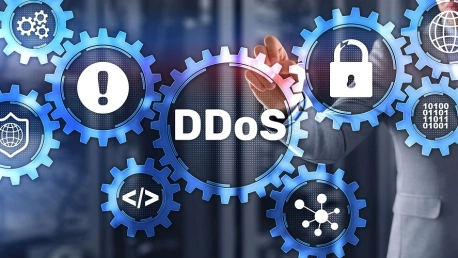Organizations worldwide are grappling with the alarming rise in Distributed Denial of Service (DDoS) attacks, which have grown in both volume and sophistication over recent years. According to the 2024 Imperva DDoS Threat Landscape Report, this increase is fueled not only by advanced techniques but also by greater accessibility of DDoS tools through automation, enabling even those with limited technical expertise to launch significant attacks. As these threats evolve, organizations are finding it increasingly crucial to adopt robust strategies to mitigate their impact. This article delves into the trends highlighted by the report and offers strategic insights into how organizations can combat these rising threats effectively.
Understanding the Geopolitical Influence on DDoS Activity
One of the most notable trends identified in the 2024 Imperva DDoS Threat Landscape Report is the significant influence of geopolitical tensions on DDoS activity. Geopolitical conflicts and unrest have created a fertile environment for cyber-attacks, underscoring the need for organizations in affected regions to be particularly vigilant. For instance, the Middle East experienced a 118% increase in DDoS attacks due to ongoing unrest, while the Russia-Ukraine conflict led to an astonishing 519% surge in DDoS activity targeting Ukraine. Similarly, cybersecurity competition has resulted in an 84% rise in attacks on China, revealing a clear correlation between geopolitical dynamics and cyber threats.These statistics highlight the importance for organizations to stay informed about geopolitical developments and their potential impact on cybersecurity. With cyber-attacks increasingly being used as tools of political coercion or retaliation, organizations operating in politically volatile regions are especially at risk. To mitigate these threats, it is imperative to implement continuous monitoring of network traffic, particularly during periods of heightened political tension. Additionally, collaboration with cybersecurity firms to gain timely intelligence on emerging threats can help organizations stay one step ahead of potential attackers, thereby safeguarding their assets and data.
Safeguarding Critical Sectors from DDoS Attacks
Another critical insight from the Imperva report is the heightened vulnerability of vital industries to DDoS attacks. The telecommunications and Internet Service Providers (ISPs) sector, for example, faced a staggering 548% increase in attacks, signifying their crucial role in internet connectivity and in keeping businesses and individuals online. The healthcare sector also saw a 236% rise, highlighting the severe implications such attacks could have on essential services and patient data security. Finally, the gaming industry witnessed a 208% increase in DDoS attacks, affecting not only online gaming experiences but also associated financial transactions.Given these sector-specific vulnerabilities, organizations within these industries need to adopt tailored defense strategies. Telecommunications firms and ISPs should invest in advanced DDoS mitigation solutions capable of handling high traffic volumes and rapidly identifying malicious activity. Healthcare organizations must prioritize secure data handling and implement strong encryption protocols alongside robust DDoS protection to ensure patient information remains secure. Meanwhile, the gaming industry can benefit from ensuring their platforms are resilient against varying attack vectors, complemented by regular stress testing and real-time monitoring, which can help detect and mitigate attacks before they escalate.
Key Statistical Highlights and Implications
The 2024 Imperva DDoS Threat Landscape Report offers key statistical insights that highlight the pressing need for robust cybersecurity defenses. One standout statistic is the 111% increase in mitigated DDoS attacks in the first half of 2024 compared to the same period in 2023. Additionally, an unprecedented Application Layer DDoS attack in February, which peaked at 4.7 million Requests Per Second (RPS), showcases the sheer scale and potential impact of modern DDoS threats. Furthermore, the report notes a 310% bandwidth increase in DNS Amplification attacks in 2023, emphasizing the need for updated and effective mitigation measures.These statistics underscore the complexity and evolving nature of the DDoS threat landscape. Organizations must therefore prioritize the implementation of cutting-edge protection mechanisms to mitigate these risks. Investing in DDoS mitigation services that offer comprehensive protection across different layers of the network is crucial. Additionally, regularly updating and patching systems can help close vulnerabilities that attackers might exploit. Furthermore, employing AI-driven defense mechanisms can enhance the ability to detect and counteract attacks in real-time, thereby minimizing potential disruptions and safeguarding critical systems and data.
Strategic Recommendations for Enhancing Cybersecurity Defenses
Organizations around the globe are struggling with the disturbing surge in Distributed Denial of Service (DDoS) attacks, which have not only increased in volume but also in complexity over recent years. The 2024 Imperva DDoS Threat Landscape Report highlights this trend, noting that advancements in DDoS techniques and the growing availability of DDoS tools via automation significantly contribute to this rise. These tools make it possible for individuals with limited technical skills to launch impactful attacks. As these cyber threats continue to evolve, it has become critical for organizations to implement strong strategies to mitigate their effects. This comprehensive report sheds light on current trends and provides tactical recommendations for organizations to effectively defend against these escalating threats. The key is proactive defense mechanisms, continuous monitoring, and investing in state-of-the-art security solutions. By staying informed and adopting these advanced strategies, organizations can better prepare to thwart DDoS attacks and safeguard their digital assets.









